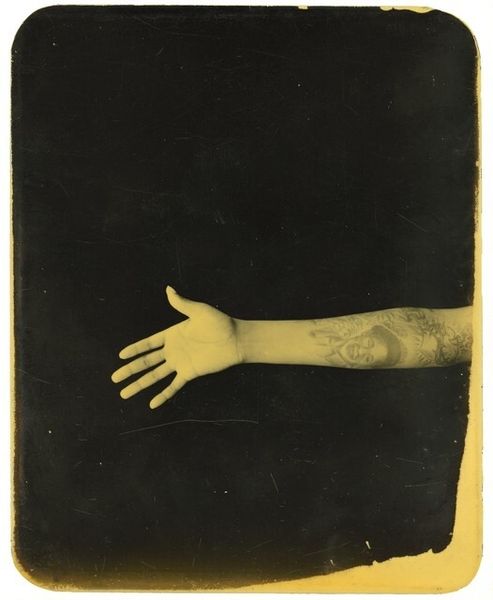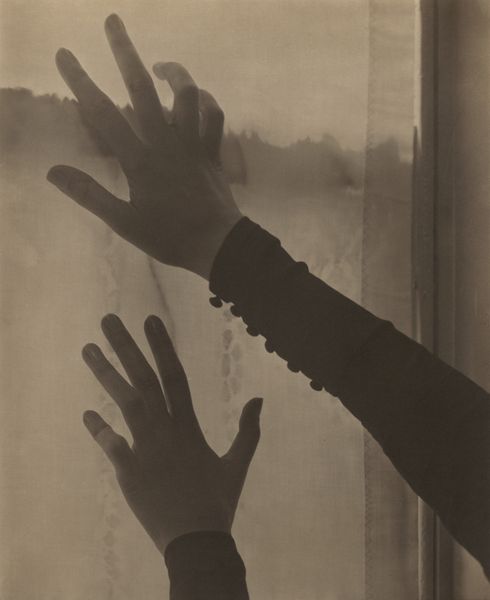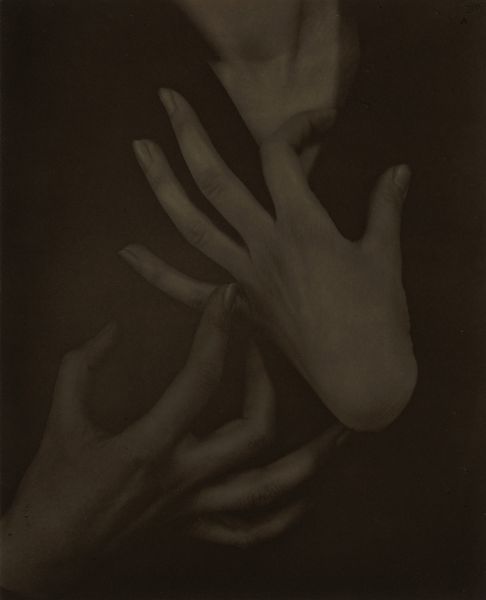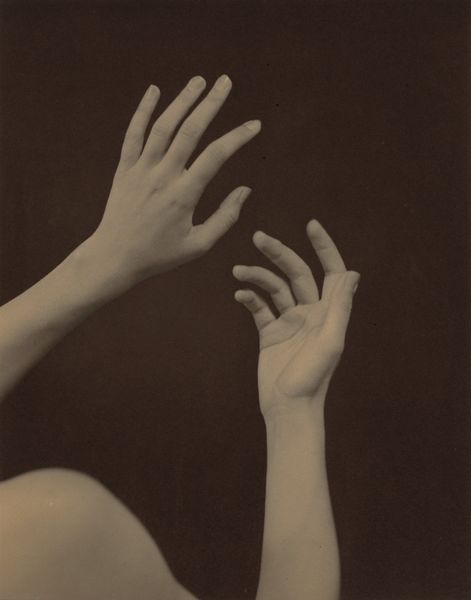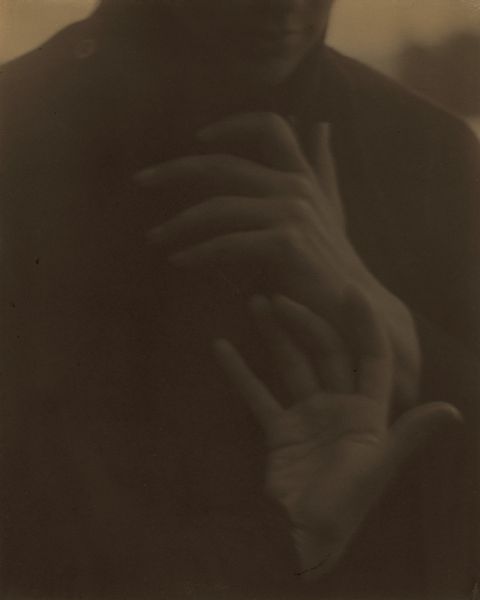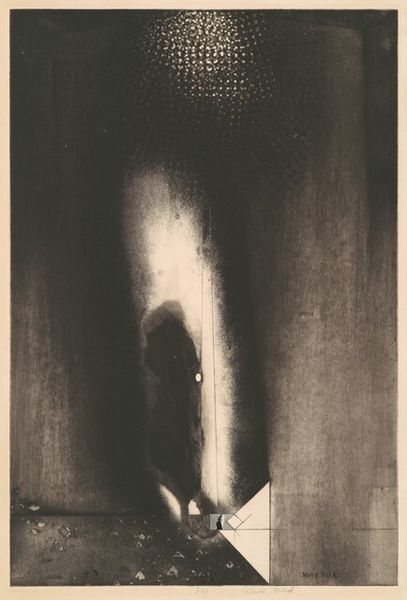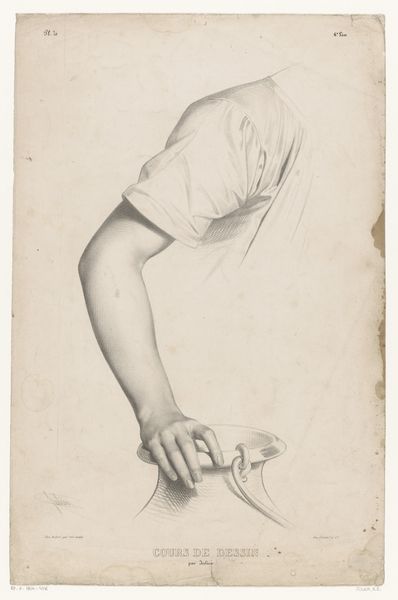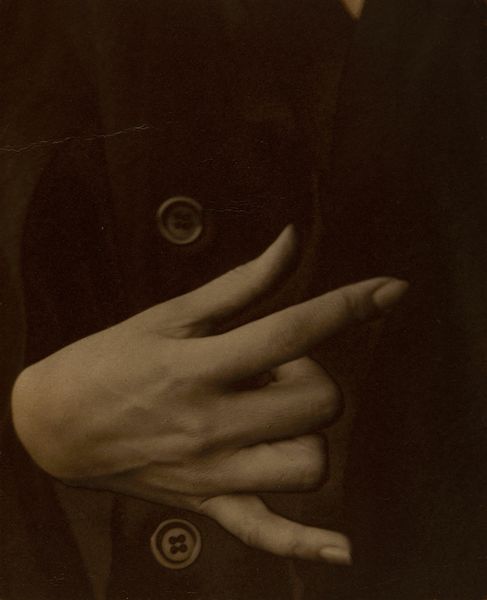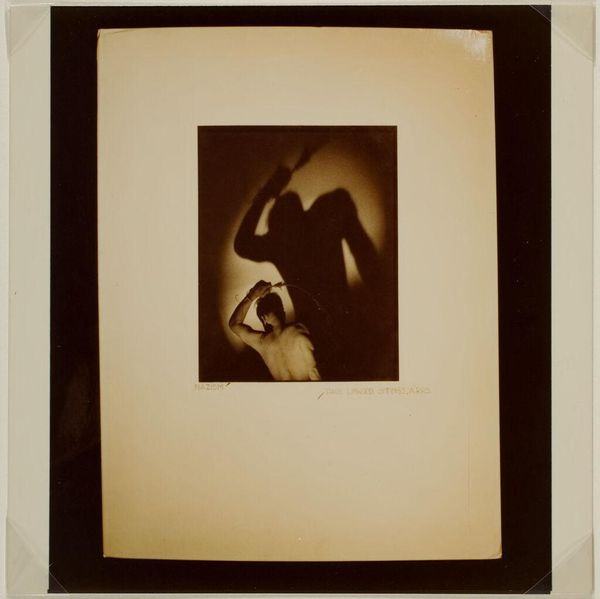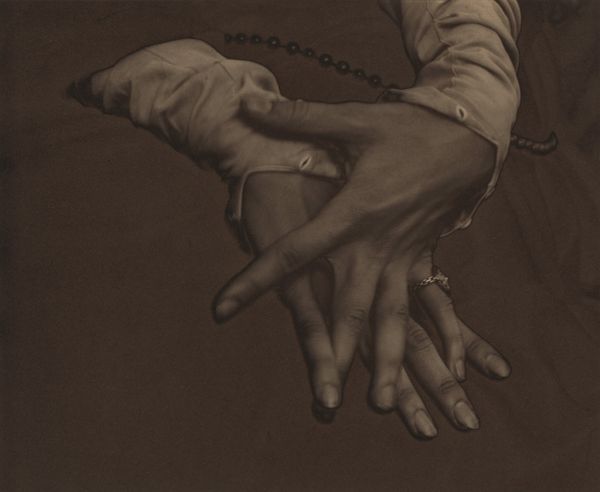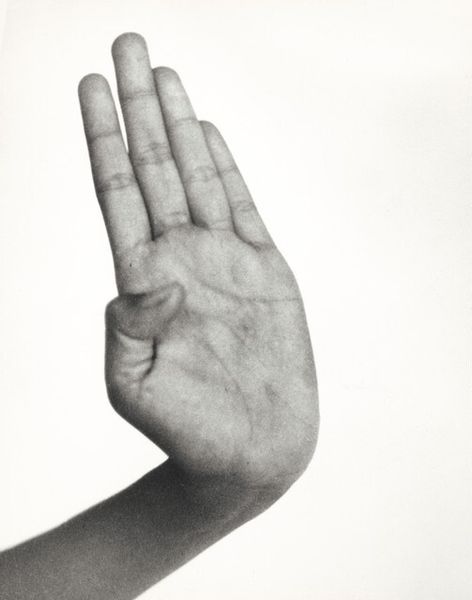
photography, gelatin-silver-print
#
portrait
#
still-life-photography
#
contemporary
#
photography
#
gelatin-silver-print
#
realism
Dimensions: image/plate: 12.7 × 10.1 cm (5 × 4 in.)
Copyright: National Gallery of Art: CC0 1.0
Curator: Looking at this Deborah Luster gelatin-silver print, titled "Wilbert Jones, Jesus Wristwatch, Angola, Louisiana", made between 199 and 1999, the most striking feature is its palpable quietness. There's an intense, intimate feel. Editor: It's almost sepia-toned, the light so concentrated. The image consists of a hand and wrist sporting a watch. The veins in the hand are incredibly prominent, and on the face of the watch is an image of Jesus. It’s more than a portrait or still life; it feels profoundly personal, and perhaps even…staged. Curator: Agreed. Luster’s work often explores themes of mortality and memory, especially related to marginalized communities. Considering it's Angola, Louisiana, the setting is the infamous Angola prison. What does a personalized item like this signify within the confines of incarceration? Who crafts these watches, and under what conditions are they circulated amongst the inmates? What kind of labor did it require? Editor: Knowing it’s from Angola definitely shifts the narrative. The watch, a symbol of time, feels laden with meaning within a system that largely controls time. Does this "Jesus wristwatch" imply hope, rebellion, or maybe just a quiet, personal connection to faith within the strictures of daily life? Curator: It's powerful how such a simple object—mass produced and individualized— becomes a cultural artifact within this very specific socio-political context. The labor in creating such a watch within the system—its materials and craftsmanship, tell a history of resourcefulness and individual identity. Editor: And how this photograph exists to capture it. It pushes the image beyond a family photo. The photograph itself is also a testament, capturing the subject in relation to the world, and how prison systems are tied to broader American social structures. In what ways has religion acted as both solace and instrument of control within institutions? Curator: Absolutely. Even its presentation—a gelatin-silver print—alludes to a specific era of photographic practices. I’m struck by its delicate nature— the contrast with the harsh realities it subtly hints at. Editor: Yes, it's that tension—the gentle portrayal of a human detail against a brutal backdrop—that resonates long after you look away. It urges one to seek the whole truth.
Comments
No comments
Be the first to comment and join the conversation on the ultimate creative platform.
